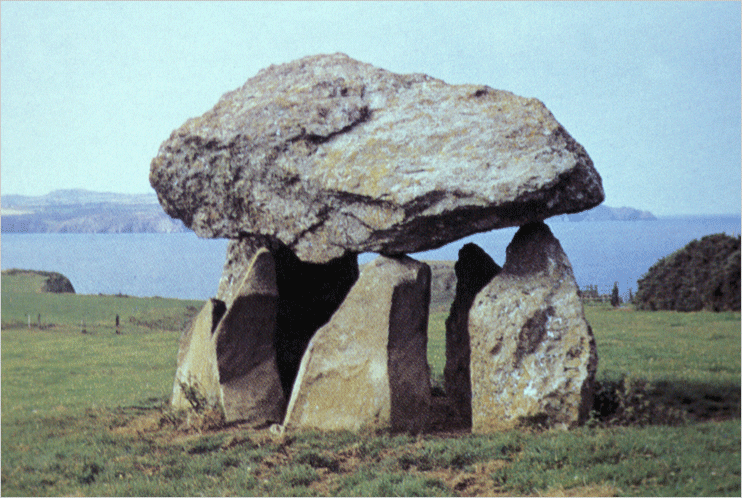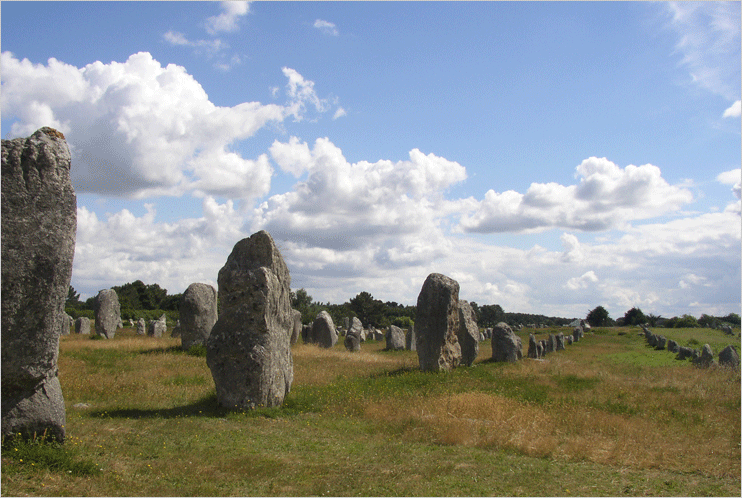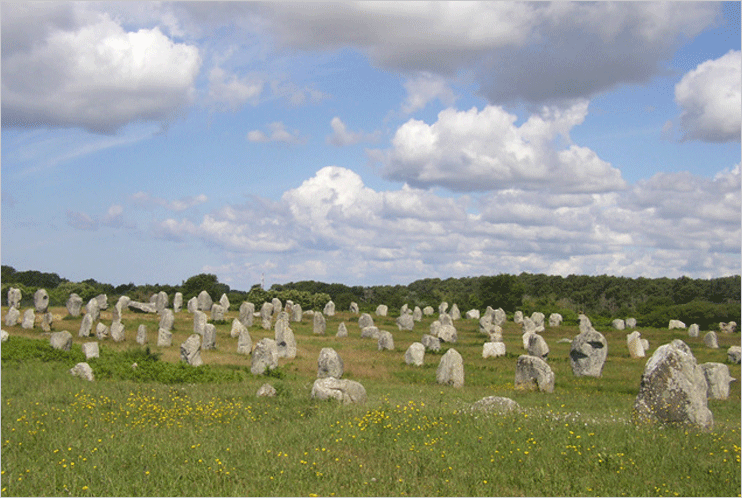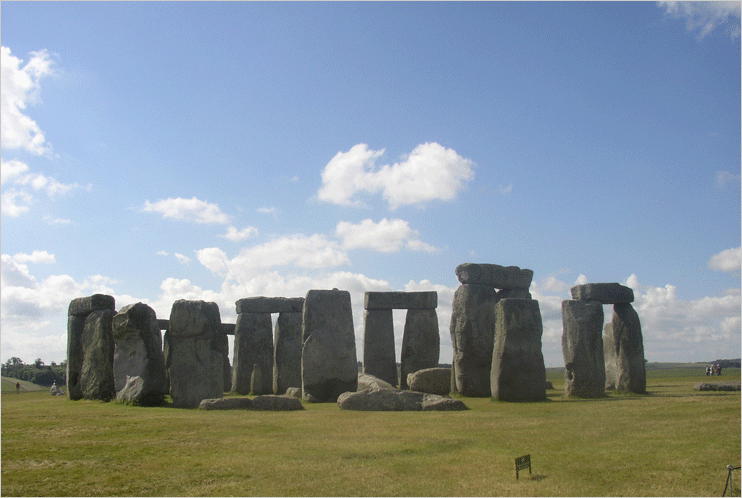A dolmen, also known as a portal tomb, is a type of single-chamber megalithic tomb and is a relic representing the megalithic culture. In Europe, megalithic monument was built with stones since the Neolithic era and in Asia and other regions, dolmens were built in the Bronze Age or Iron Age.
Dolmens in Asia including Korea were featured by one capstone in one grave and those in Western Europe were characterized by tunnel type (passage type) with several capstones over several upright stones.

A menhir represents the megalithic culture with dolmen and is a large upright standing stone. Its origin is related to the phallicism wishing the production and abundance. A single or several menhirs were distributed in columns like in France or Great Britain of Europe.

A stone row (or stone alignment), is a linear arrangement of upright, parallel megalithic standing stones set at intervals along a common axis or series of axes. Stone rows in Bretagne of France were representative in Europe, not found in Korea. The stone row was considered to be related to the ancestral rites.

A stone circle is a monument of standing stones arranged in a circle. A typical stone circle is Stone Henge in Britain, which was erected with 30 stones from 210km away. It is considered to be related to funeral or observing sunrise.

A stone statue is erected by inscribing a human face on the stone. It refers to Buksu (Jangseung ; Korean traditional totem pole) or stone haroobang and gate and stone figure erected in front of the tomb. This stone statue was discovered in many countries, but the stone statue in Easter Island of the South Pacific is representative. About 200 stone statues of human faces are erected facing towards the sea along the coast 3,200km away from South America. The stone statue of 10 m in height and 86 tons in weight is called 'the mystery of Easter Island'.
